Progress does not stand still, and now we are planning to purchase and install in our house not simple glass, but smart. But what is this innovation - smart glass? How it is made, where it is used, how much it costs and what advantages it has - this is the topic of our thorough study2356.
Content
Smart glass (smart-window) - what is it?
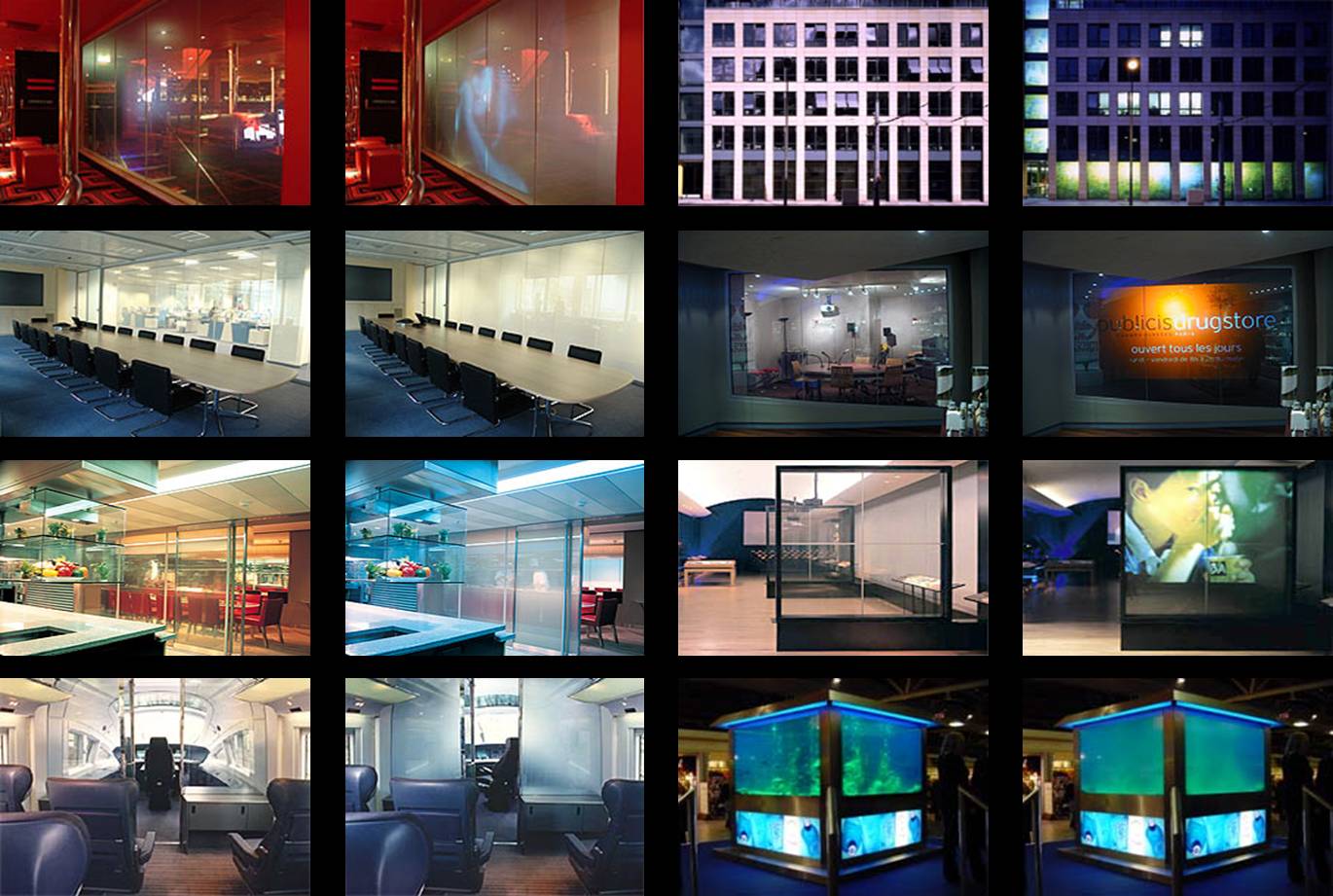
Smart (or smart glass), also called LCD-glass (liquid crystal), or electrochromic glass, glass with adjustable transparency or glass with changing properties, but in fact it is not exactly glass in the sense of the word in which we are to it have got used. That is, at first glance it is all glass, but it is not simple, but complex manufacture, using nanotechnology, and therefore is called "smart". Smart-glass is a composite mixture of several layers of glass and various chemical materials. This is one of the last outstanding achievements of science and technology, it has been on the market for more than five years, and today smart glass has found wide application in modern architecture and also in the production of all kinds of translucent structures, such as glass doors, interior partitions and windows.
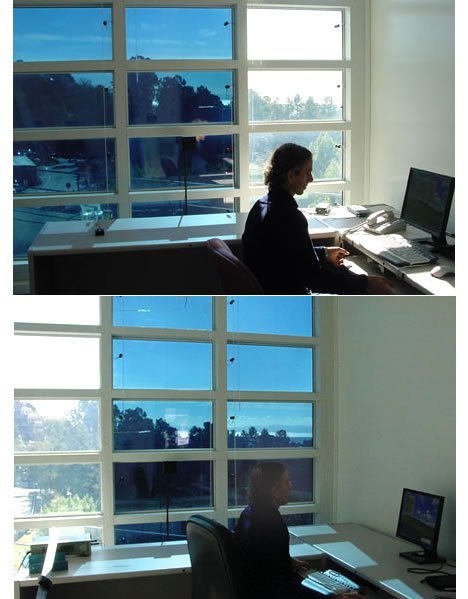
Intelligent glass with adjustable transparency is able, under the influence of external influences, to change such optical properties as light transmittance, haze, heat absorption coefficient and others. That is, it is sensitive to changes in such external conditions as illumination, rise or fall of the ambient temperature, or when the electric voltage is applied (that is, when the power button is turned on or off) changes its external properties. All this is possible thanks to such an element present in the smart glass, like an electrochromic film that is applied directly to the glass surface with the help of a special deposition technology that gives the smart glass fantastic, and such useful properties.
The use of smart glass with adjustable transparency
In private houses and apartments smart glass is used, mainly when installing and installing internal interior doors and partitions. For the purpose of the so-called acoustic zoning of residential buildings of all kinds, one uses smart glass panels that are manufactured using PVB, an expensive sound-absorbing special film. Also, to regulate the transparency of the partitions, a PDLC film (also referred to as "electro-tinting") is placed between the two panes. Only at the touch of a button, thanks to such a special film, the glass either becomes completely opaque - matte, or - completely transparent. Agree, this is very convenient - when it is necessary to create more light in the house, make glass interior partitions transparent, and when night comes - it is opaque, for the privacy of the tenants of the house in their rooms.
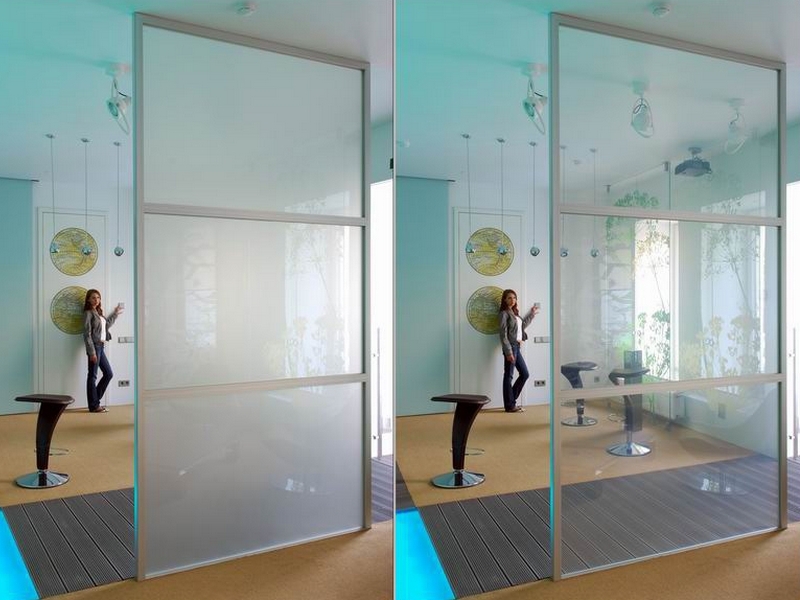
Advantages and disadvantages of smart glass
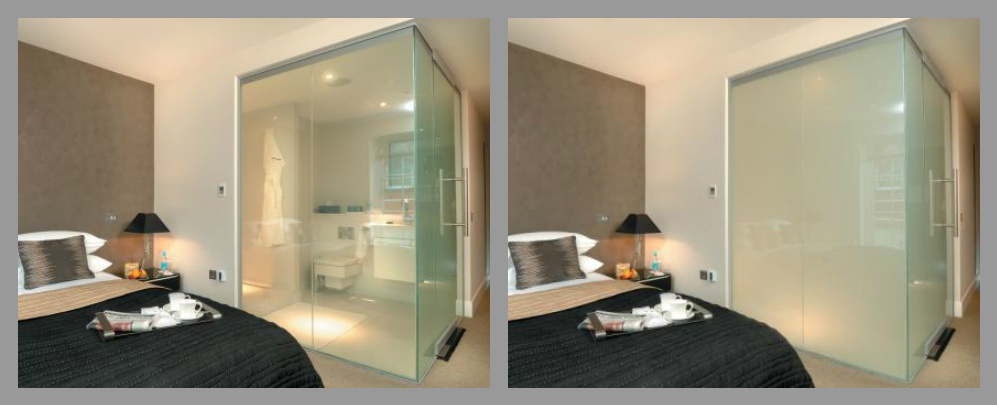
Smart glass, used in place of the usual, allows you to reduce heat loss, and accordingly, and the cost of heating the premises. Also in those premises of the house where the air conditioning system is installed, smart glass will help reduce electricity costs (as well as lighting), it will serve as a full-fledged alternative to curtains (it can be used instead of blinds), because smart glass is a darkening screen. Pressing the button, it is possible to "open" the blinds in the morning, and in the evening - "lower" them to the windows. A great advantage of smart glass (electrochemical or liquid crystal) is that even in a transparent state it does not let out harmful radiation such as ultraviolet radiation. But this is possible under one condition - if a special coating is used on the smart glass on suspended particles (then it will help to block the ultraviolet). Therefore, when buying such glasses, please inquire about its availability from the seller.
The high cost of smart glass is practically its only drawback. The price of smart glass is the higher it is thicker and bigger. A thin smart-glass of a small size will cost almost twice as much. Approximate cost of "smart glass" - twenty thousand rubles (per square meter). However, it is worth noting that the price of smart glass, in fact, is not too high, as it may seem at first glance, in comparison with the benefits that you will have, using this innovation in your home.
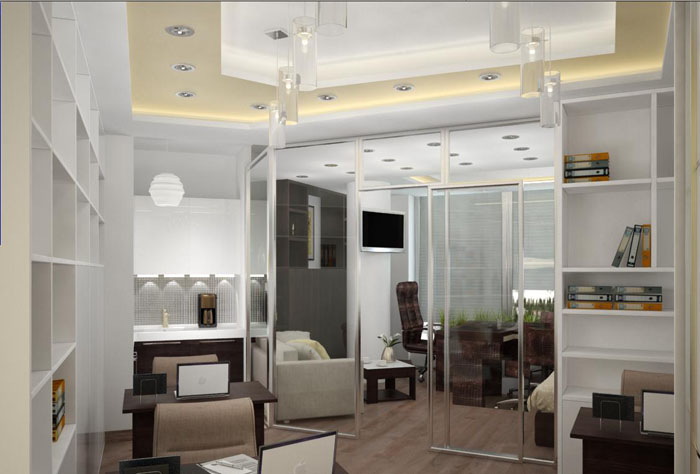
To others, it must be admitted, not so essential drawbacks of smart glass include the need to use electricity when handling it, as well as the low switching speed between its states (electrochromic glass), cloudiness or low transparency of smart glass (compared to conventional glass). It should be noted, however, that the smart glass of the last generation, in comparison with its predecessors, has a lower level of sharp increase in light scattering (opalescence) and can work fine for low-voltage power supply from 12 to 36 W. This is a big plus and, undoubtedly, adds comfort and convenience to smart-glass users.
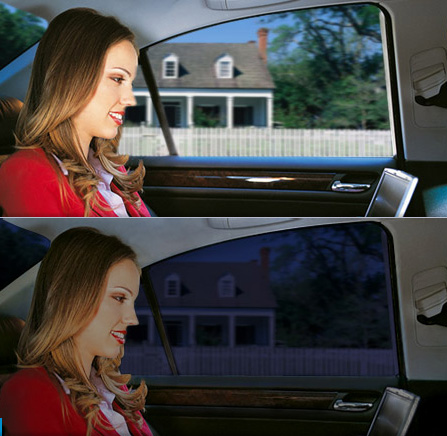
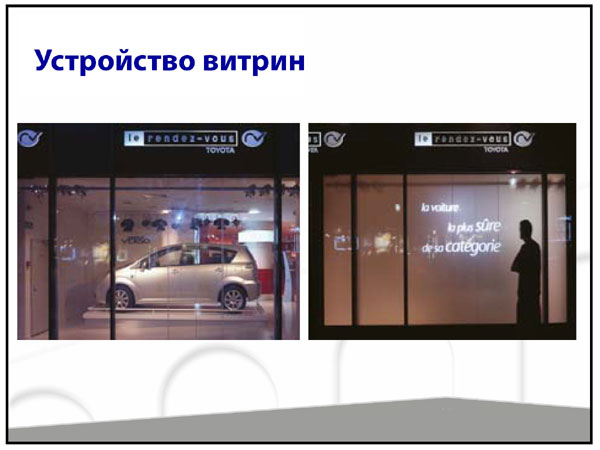
In conclusion of this short article, we offer you a video about the use of smart glass by ordinary users in our time.



















